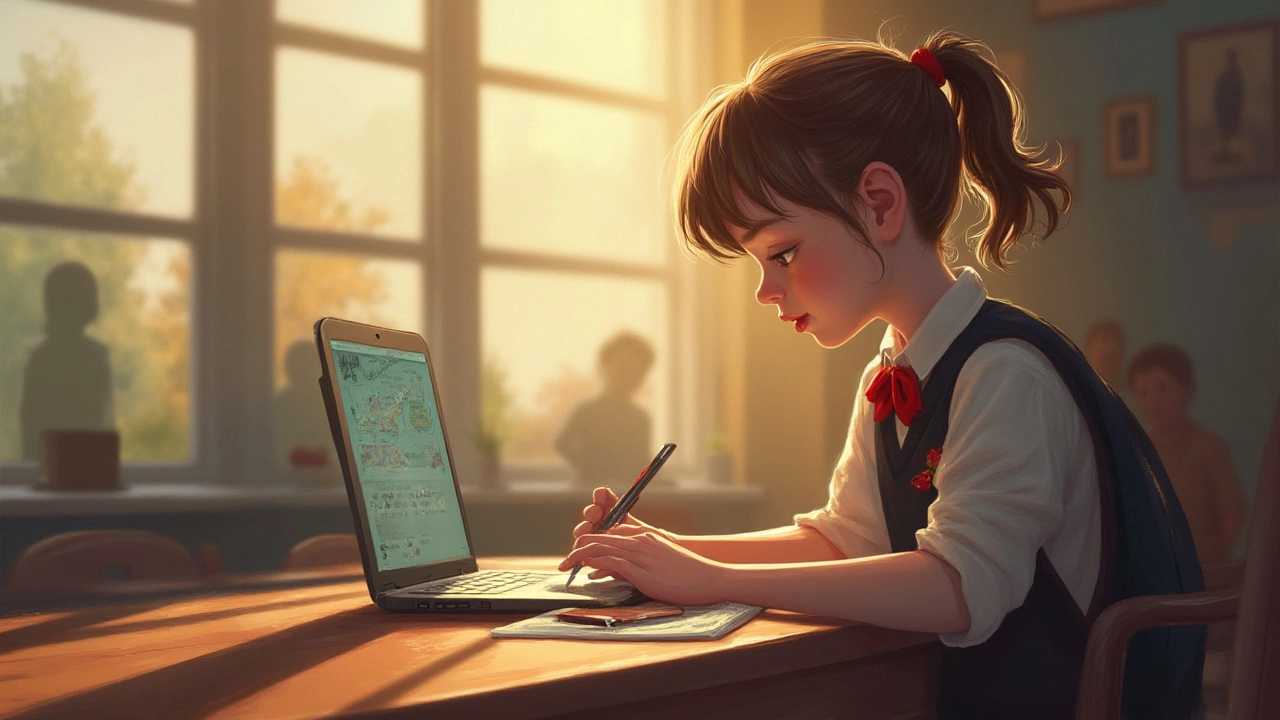-
4
- 0

The Origins and Evolution of Distance Learning: A Complete History
Imagine a world where the only way to attend school is by waiting for paper lessons to arrive in your mailbox. It almost sounds quaint today, given how we just log on and stream classes in our pajamas. But distance learning didn’t start with Zoom or flashy apps; it has roots that run much deeper, long before anyone heard the word 'Internet.' In fact, the very first attempts at remote education involved snail mail, typewriters, and a lot of patience.
The Surprising Beginnings: Distance Learning in the 19th Century
Rewind to the 1840s. Sir Isaac Pitman, an Englishman, got the clever idea to teach shorthand by post. Yes, real post — the kind that took days to deliver. He would send text to students, they’d transcribe it, and then mail it back for correction. It sounds slow because it was! But Pitman’s method actually kicked off the world’s first correspondence courses, making education possible across distances no one thought reasonable for learning.
Not long after, in 1858, the University of London jumped onto the bandwagon, offering external degrees. This was a big deal; now, you could be anywhere in the British Empire and study for a real university degree without leaving your hometown. By 1873, the idea crossed the pond. The Society to Encourage Home Studies in Boston started mailing lessons, so women — who were often not allowed in colleges — could finally access a genuine education. This wasn’t just about convenience; distance learning broke barriers that traditional education couldn’t touch.
And with the arrival of the railway and faster mail service, these paper-based courses spread even wider. By the turn of the century, correspondence schools were everywhere, teaching everything from business to art to accounting. The sheer scale is wild. In 1920, the International Correspondence Schools (ICS) in Scranton, Pennsylvania, reported over a million students!
Here's a quick timeline to show how early distance learning spread across the globe:
| Year | Event | Location |
|---|---|---|
| 1840s | Pitman’s shorthand courses | England |
| 1858 | University of London external degrees | UK |
| 1873 | Society to Encourage Studies at Home | USA |
| 1892 | University of Chicago correspondence division | USA |
| 1920 | ICS reaches 1 million students | USA |
So, long before anyone imagined online learning, millions were already learning from afar — just on paper, with pens and stamps!
Innovation in Action: Technology’s Role in Distance Learning
Mail wasn't the only way to learn remotely. As new technology arrived, distance learning always found a way to hitch a ride. By the 1920s and '30s, radio broadcasts carried lessons into homes. Early educational radio was huge in the U.S. The University of Iowa started one of the first educational radio stations in 1925. You tuned in as if it was just another daily program. Then came television. The University of Houston set up the first TV station for education in 1953 — way before Netflix or YouTube dreams!
Some schools mailed out vinyl records and film strips for lessons in music or science, while others used 'phone teaching.' Teachers would call students, often those stranded by illness or geography, and teach over the phone. This feels so old-school, but it was cutting-edge at the time.
The big leap came with computers. The University of Illinois introduced PLATO, the first big computer-based education service, way back in 1960. It had chat, forums, online classes — all the ingredients we see today but on clunky screens. The Open University in the UK changed things in 1969, combining TV, radio, and mailed kits. They wanted to make college possible for British adults with jobs, kids, or who lived in remote areas. It worked — by 1980, it was one of Europe’s largest universities.
Home computers and the rise of the Internet in the 1990s blew the doors off. Suddenly, learning looked nothing like school. University of Phoenix launched the first real online degree in 1989. The first fully web-based high school appeared in the late 1990s. By the time the 2000s arrived, the boom was on — more courses, more platforms, and a world of students who never had to find a seat in a lecture hall.
Here’s some cool data — in 1998, less than 2% of U.S. college students took an online course. By 2024, that number has soared to over 70% either blending online learning with regular classes or studying fully online. That’s a radical change in just two decades.

How Distance Learning Transformed Access to Education
Why did distance learning keep growing? Mostly, because it cracks open doors that ordinary schooling slams shut. Take the story of rural families — when the closest high school is a two-hour drive away, correspondence or online schooling can be a lifeline. In the 20th century, thousands of Australian kids in the outback got their first real lessons with the 'School of the Air,' which used radio to connect scattered students to teachers in the nearest town. The program is still running, now using satellite Internet instead of crackly radio waves.
Special needs students, homebound kids, military families always on the move — all found new freedom in distance learning. Universities and vocational schools ramped up remote options during wars or pandemics, from the 1918 flu to COVID-19. During the recent pandemic, for example, U.S. Census data showed nine out of ten households with school-aged kids reported some kind of distance instruction.
Distance education also made a difference for adults who never finished college, or who wanted a career change without quitting work. Older students, single parents, and people caring for relatives signed up for courses — sometimes one at a time, sometimes for whole degrees — because flexibility was suddenly on their side.
Here are a few specific breakthroughs:
- 1975: The Open University’s first blind graduate shows how alternative formats change lives.
- 1999: MIT starts offering free online course material, using the digital world to smash tuition barriers.
- 2012: The first massive open online courses (MOOCs) enroll over 100,000 students per class, many from developing countries.
This isn’t just 'school at home.' Distance learning changes who gets a seat at the table. Wherever you are, whatever you face, there’s a course — and often, a whole online campus — ready for you. That’s a revolution, not just an upgrade.
Modern Distance Learning: Tools, Platforms, and Real-Life Tips
Skip ahead to today, and it’s hard to picture education without digital lessons. We’ve got snazzy platforms, real-time video, group chats, learning apps, and even virtual reality classrooms. If you’ve tried Duolingo to learn Spanish in bed or coded your first website on Coursera, you’re part of the latest wave.
Some tools in the modern kit:
- Learning management systems (LMS) like Canvas or Moodle — these hold your courses, track grades, and let you message classmates or teachers (goodbye, endless email chains).
- Real-time video rooms like Zoom, Google Meet, or Microsoft Teams — face-to-face learning, minus the commute.
- Adaptive lessons and quizzes — apps track what you know, then tweak lessons to fill your gaps. Think Khan Academy or Brilliant.
- Cloud storage like Google Drive or Dropbox — all your assignments in one digital backpack.
- Discussion boards and group chat tools — for late-night questions or peer support. Reddit and Slack communities for learners are surprisingly active!
Want to get the most from modern distance learning? Here are some real-life tips straight from seasoned remote learners:
- Set a real schedule. Don’t rely on 'I’ll do it later.' Pick set hours, like real class, even if you’re at home.
- Designate a study spot. Even if it’s a corner of your kitchen table, make it your school zone. Close the tabs, hide your phone.
- Turn on your camera during live classes. You’ll feel accountable — and teachers notice you’re there.
- Ask for help, often. Email your teacher, ping in a group chat, or join a student forum. Remote learners who seek help early stick with classes longer.
- Pace yourself. Break up longer assignments into smaller daily chunks. Long all-nighters don’t mix well with learning at home.
- Check for free resources. Lots of universities and companies post lectures, tutorials, and exercises for free. Don’t be afraid to supplement your main course with side learning!
Distance learning also means teaching and learning styles adapt fast. Instructors lean on multimedia, not just reading and writing. Some use video feedback, interactive quizzes, or student polls. Students get creative, too — recording podcasts instead of essays, creating TikTok explainers, or running group projects across time zones.

The Future: Where is Distance Learning Going?
That first shorthand course by post would be unrecognizable today. Still, the goal hasn’t changed: breaking down geographical, social, and economic barriers to education. Tech only turbocharges that mission. Expect more artificial intelligence — from lesson planning to personalized feedback — to show up in your next class. And there’s already talk of lessons designed for augmented reality, where you build molecules or explore ancient Rome as if you’re really there. Some universities, like Georgia Tech or Harvard, are launching AI companions to nudge you when you’re falling behind or to suggest resources you missed.
The numbers don’t lie. According to a 2023 UNESCO report, global enrollment in distance education jumped by 35% between 2019 and 2023. Even traditional schools are hybrid now, blending face-to-face and online lessons. Hint: if you know how to manage your own learning and tech tools, you’re golden for the next decade (and it also looks awesome on a resume).
Accessibility is another frontier. More tools support speech-to-text, real-time language translation, and even sign language avatars. With Starlink and low-orbit satellites, super-fast connections reach deep into rural Africa or the Australian Outback. That means the next generation of learners — whether facing a blizzard in Canada, a heat wave in India, or a civil conflict — could join class without ever leaving their village.
Here’s the wild thing: every jump forward in distance learning tends to snowball. New tech comes out, more schools get on board, and suddenly what seemed impossible just two years ago becomes normal. We’re heading for an education system that reaches every willing mind on the planet, not just the ones lucky enough to live near a campus. That’s the magic — and the promise — of distance learning, from the 1800s right up to today.
Write a comment
Tags Weight
- education
- study tips
- adult education
- exam preparation
- online courses
- adult learning
- lifelong learning
- distance learning
- GCSE revision
- online education
- private tutoring
- special needs education
- scholarships
- remote learning
- scholarship tips
- financial aid
- international students
- effective learning
- e-learning
- education funding

Written by Elara Winslow
View all posts by: Elara Winslow